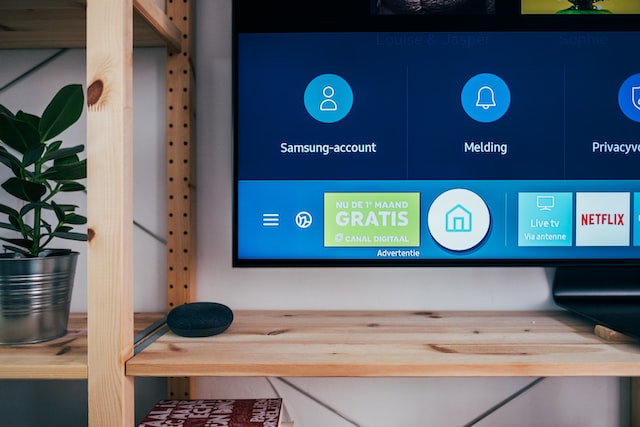Photo by Jonas Leupe on Unsplash
The frustration of replacing your electronic devices every little time.
Our Smart TV Stick (not a brand) stopped functioning after a year of good use. No more warranty, unfortunately. An update of the software was advised and that’s what we did. If anything, worse!
WTF?
My husband and I don’t enjoy “luxury” that much. When we buy something we are happy with “good enough” stuff. If a simple product does the job, we don’t need a fancy one. But of course, we understand that cheap often means expensive in the long run, so we went for the middle-level option. It was the safe choice or so we thought.
First, it was functioning just fine. No pretty features, but working.
Then, it started doing these irritating things like suddenly stopping during a movie or showing the image in a choppy way. Wifi is good. Internet connection is not the problem so it must be the device.
Updates and rebooting were the solution, for a while.
And then the choppy parts were more frequent, the apps wouldn’t start and when they did, it took them too long to show all the movie covers. In the lucky scenario where a video was started, it would run for a couple of minutes before throwing you out.
There were no more official updates available. It was unusable. After only a year!
(I probably look like an old lady hitting the remote control in hopes of getting the battery charged. I definitely know I will be one of those.)
Ok. Maybe we thought this particular Smart TV Stick would do the job just fine and it turned out it didn’t have enough capacity to run the updated software. It makes sense, doesn’t it? I tell you already, that’s not it.
Expensive electronic devices usually come with an extra processing capacity in other to assume the heavy requirements of future updates without sacrificing their performance. You could say that my Smart TV Stick didn’t have enough capacity to run the new version of Android that was updated and that was it. A very logical, and plausible, explanation.
But in further investigation… Instigated by the fury of a bored engineer and his activist-ish wife… Discoveries have been made…
My furious husband, desperate to get his money in value, changed the launcher to a simpler version with only the basics. In plain English, here is what he did: he installed a new menu that manages all the apps on Android but doesn’t have that much sparkle around. Nothing more. The application didn’t look as cute as before but it did the same work. As I said earlier, we don’t care much about fancy stuff. This of course has to be done by someone with technical skills. I am lucky to have one of those at home though not everybody does.
By doing this, we realized how many ads were showing on the screen before, ads that consume energy and processing time. It also made my husband think about the services that “spy” on us, those “invisible” programs that are always running to check and record every action and decision we take within the device. This kind of thing also increases the amount of work the device does at a particular moment. It means that if you are watching a movie and one of these services starts recording information, the system may overload itself, shutting down the app you were using and interrupting your leisure time.
Software updates often prioritize the collection of data and the advertisement of products over the actual functioning of the device. I didn’t want to believe it. It doesn’t make sense to sabotage your customers, does it? In any case, my nosey husband had to satisfy his curiosity and try to deactivate them.
And puff! Running like a clock!
I would like to say we were shocked, but no. We’ve experienced how companies design their products so that once they are broken, no longer can be repaired. This is no different case. I wonder how many devices are thrown away and destroyed after an update. You would image updates are designed so that the device would improve and extend its performance. I am not saying they don’t make any improvements, but it certainly doesn’t show in the end product, as you can see. However, it allows them to make more money out of you through advertisements and data mining until they eventually stop giving you the minimum service for which you paid.
I am happy our Smart TV Stick still works but that’s only the case because my husband enjoys fidgeting with this kind of thing. Otherwise, we would be criticizing whatever brand we had chosen while searching for a new device that, over time, would have the same issue.
We lose our right to repair because the product’s construction doesn’t allow it at all. We get tricked into thinking we can use our electronics anymore after unnecessary software updates. And on top of it, they can take our data and sell it to other businesses, so we buy even more stuff.
It is indeed a silly story to tell. Still, I believe it is a good example that shows why we, as a society, have to start thinking about developing ethical codes of conduct and regulations within the technological industries. Without laws to prevent tech companies from taking advantage of their customers, these “little” concerns can grow huge.
Support the author and get the latest publications subscribing to:
Look at her latest book 📕, En Brandán

